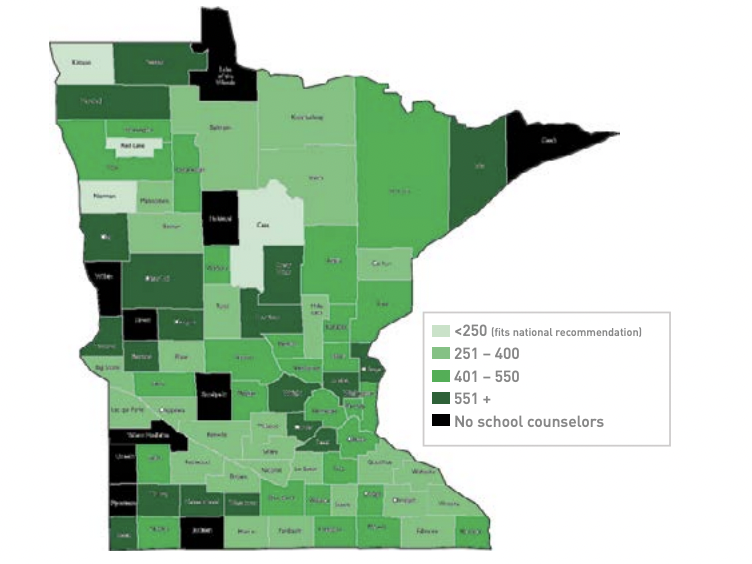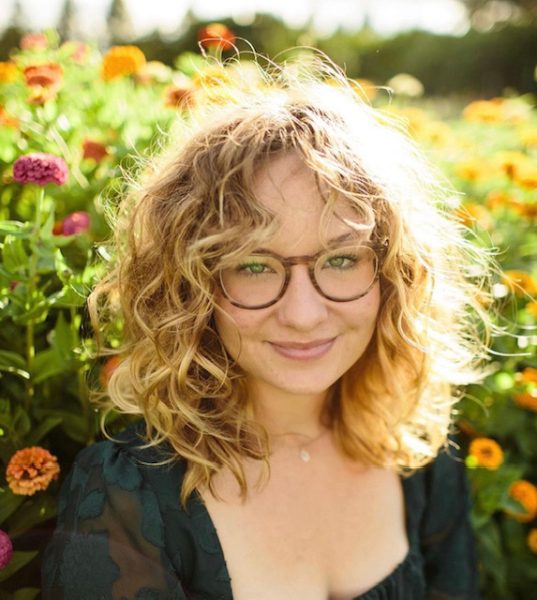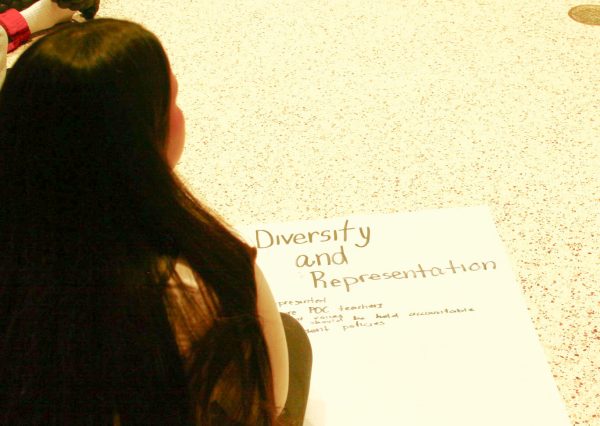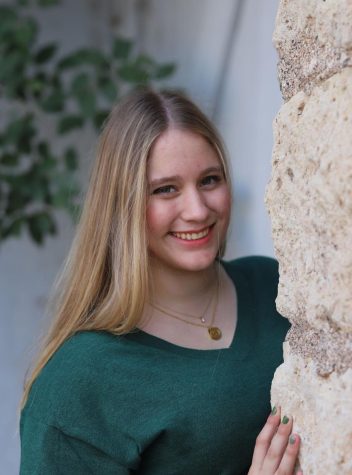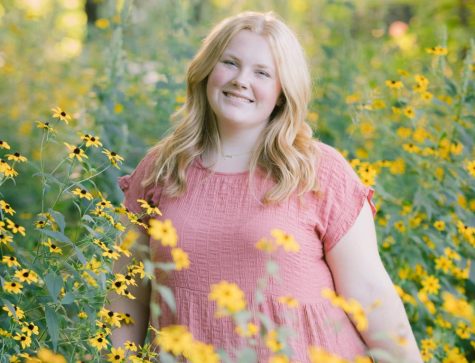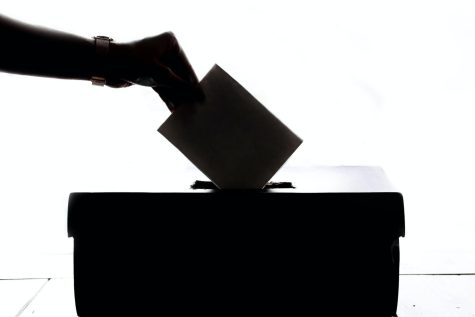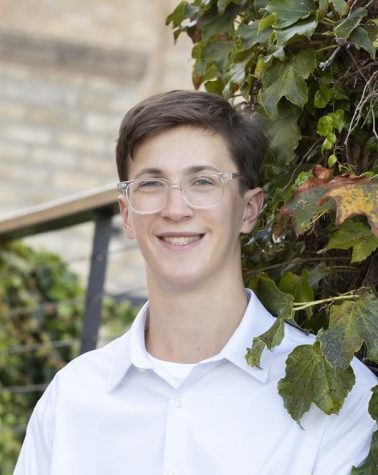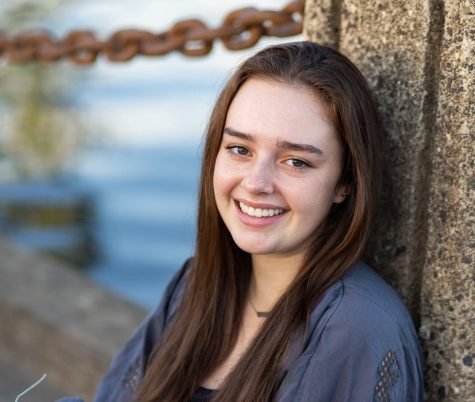Minnesota students push to see new solutions to the mental health crisis
Reprinted with permission from by American School Counselor Association
In 2016, a research study was done by the Center for Advanced Studies in Child Welfare and they show how Minnesota has the worst school counselor-to-student ratio in the country. The figure shown above then depicts the counselor-to-student ratio by Minnesota county.
The push for more mental health resources within schools has been an ongoing battle for students in Minnesota. Students have been pioneering this battle by coming up with mental health initiatives and solutions to this mental health crisis among teens today.
A report that came out in 2016 by the Center of Advanced Studies in Child Welfare, stated that Minnesota has the worst student-to-counselor ratio, 1:743, which is far off from the recommended 1:250. It is the law that schools must have at least one counselor on hand at all times. Since that report, for the past 6 years, that ratio has not moved. As of February 2022, reports have shown that current ratios stand at 1:734.
“I’m not quite surprised, honestly,” junior Avery Adams said. “Having friends from a lot of schools around here, I hear a lot about it and how they don’t feel supported within their school, but I just feel sad because that’s not how it should be.”
Adams is a student leader in the mental health initiative she started, Bring Change to Mind, along with initiatives she is an active member of, such as the Mental Health Coalition, Peer Helpers and Mental Health Forum. She has seen the battle students have been facing with the increase in mental health struggles among the student body and has been an active student in finding ways to help combat these problems.
“I think we have very sufficient academic counseling, but I think that counseling from needs to be leaning more towards mental health than it is currently,” Adams said. “They need to be trained and have better mental health response skills to adequately support the students when they have nowhere else to go.”
Stillwater has been very fortunate to have one of the better ratios in the state with 1:350. But even with a fairly decent ratio, they still struggle to hold enough support for their student’s mental health needs. According to counselor Patricia Grgurovic, majority of school counselors receive education on brief cognitive behavioral therapy but this is not often revisited during a counselors professional career. Grgurovic believes the level of ability to help a students mental health depends on their level of training.
I think we have very sufficient academic counseling, but I think that counseling from needs to be leaning more towards mental health than it is currently. They need to be trained and have better mental health response skills to adequately support the students when they have nowhere else to go.
— Avery Adams
“There are some graduate programs that are CACREP accredited for both Rehabilitation and school counseling, but others are only CACREP accredited for school counseling,” Grgurovic said. “This changes the level of awareness and ability to respond to mental health counseling…The issue becomes when the needs get higher and there isn’t an overseeing district mental health director to ensure the ongoing training is happening for current school counselors.”
The mental health initiatives have been extremely student driven. Passionate students, such as Adams, have been active members of the community, going out of their way to create solutions within the high school. Adams said that the support from the school in her drive for change has been extremely helpful and she is grateful for the help she has received, but she would like to see more action coming directly from administration instead of them backing students who have done majority of the heavy lifting with their initiatives.
“I think it’s definitely students who take the initiative,” co-president Keira Jelinek said. “You can only do so much as a student before you like have to go to Administration to get help. But, rarely is it ever administration thinking, ‘oh yeah, let’s do this,’ but it’s like always the kids, like, bringing the ideas to them.”
Iliana Belock said that as co-presidents they have tried to promote these initiatives to the best of their ability. Through social media they have made posts and the link in their bio directs viewers to resources, Belock said that this “ultimately comes down to now teachers and administrators bringing it up in classes.”
Students have been the head of all mental health initiatives and many have spoken out about counselor reform. The stigmatization of mental health has lessened over the years and you see more speaking out every day. Now, students are waiting to see a change within the system instead of the bandaid they believe has been put over these problems.
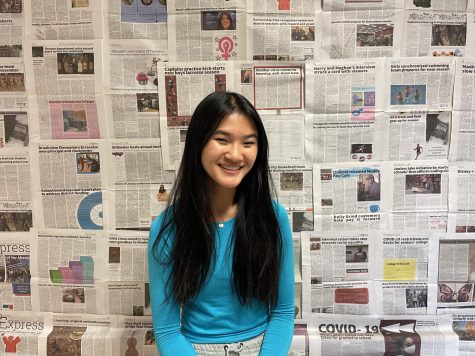
I am Maya Disher, a Senior at Stillwater Area High School. I am the photography editor-in-chief and a copy editor. I am also the photographer for the varsity...


